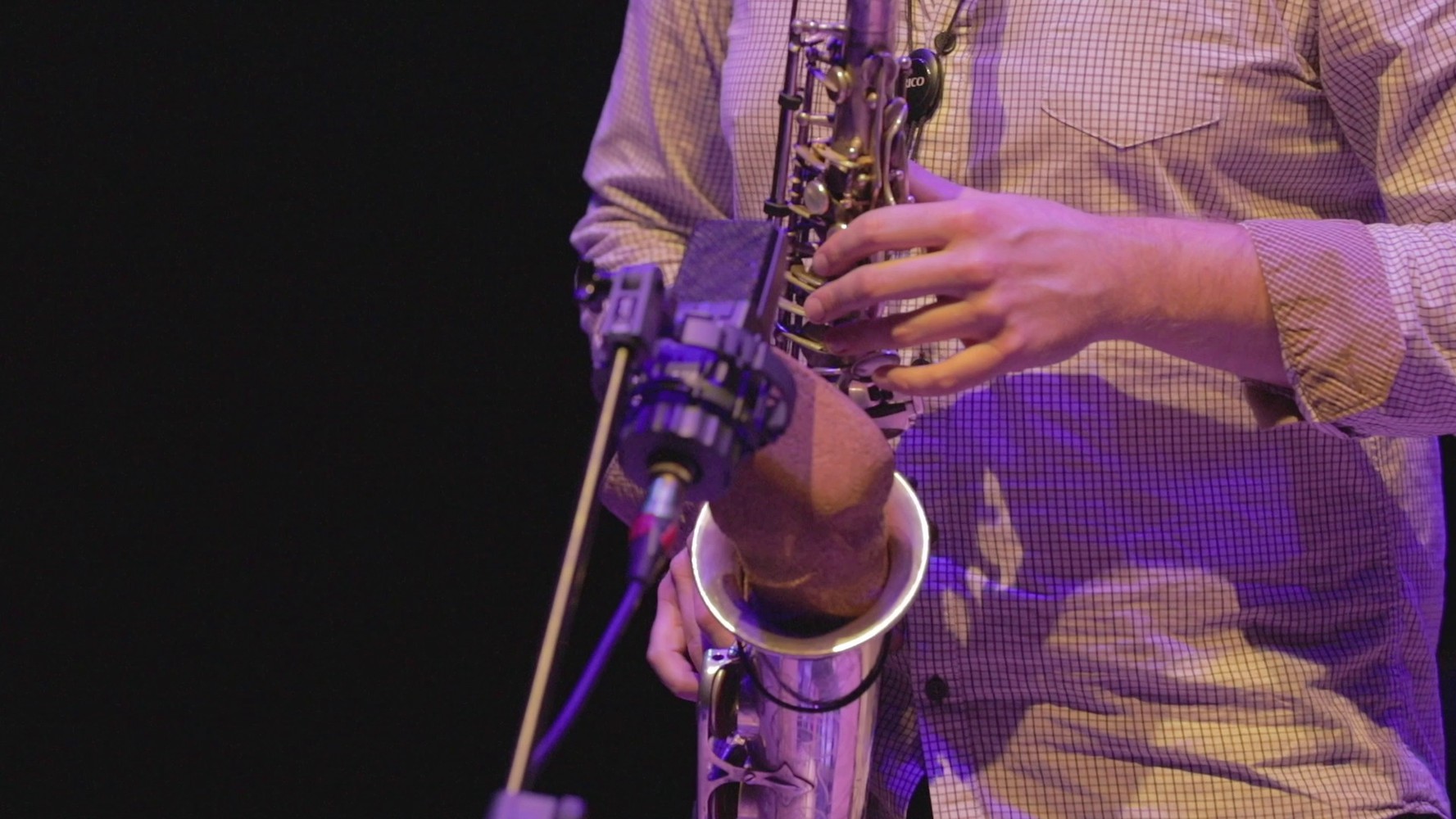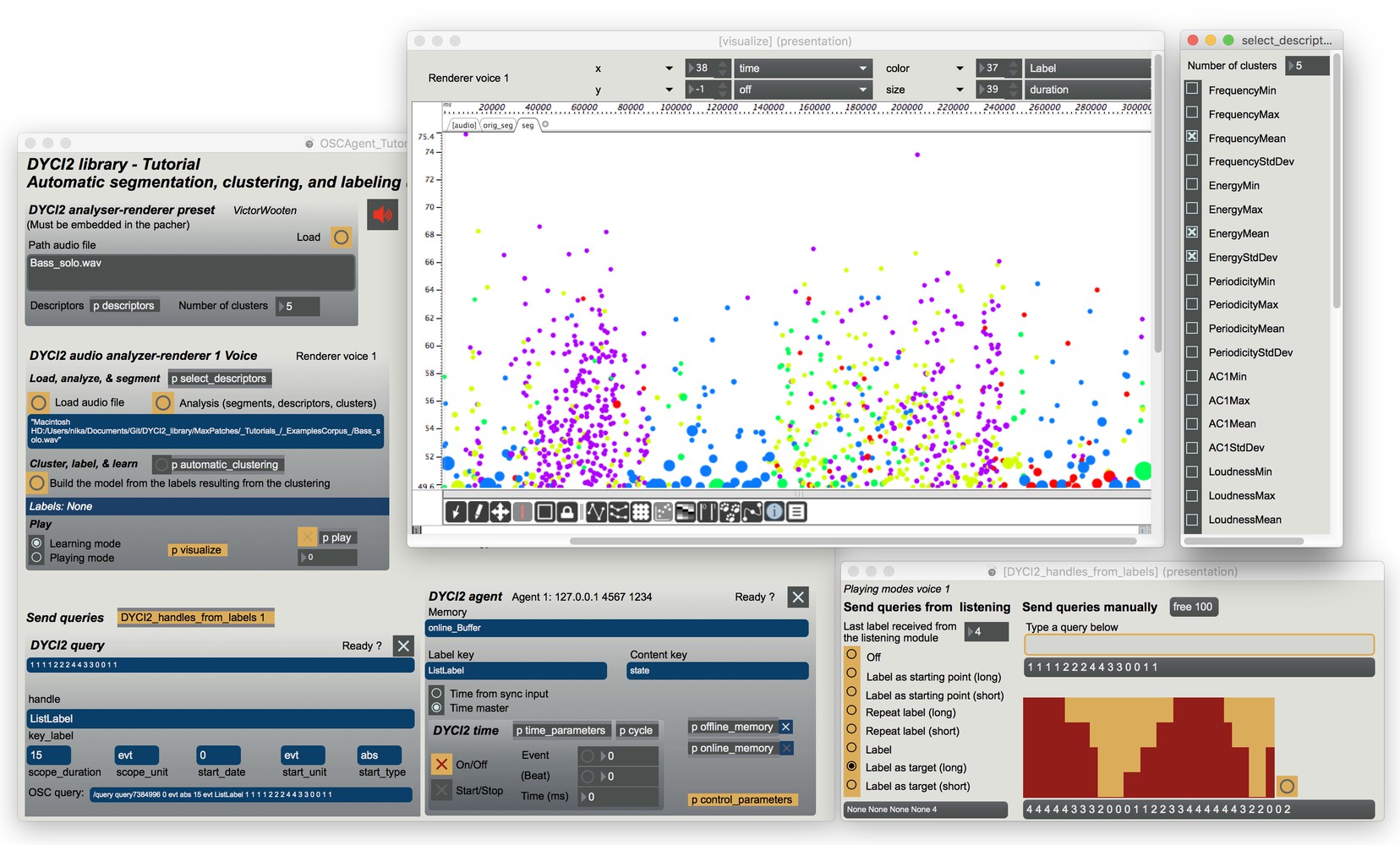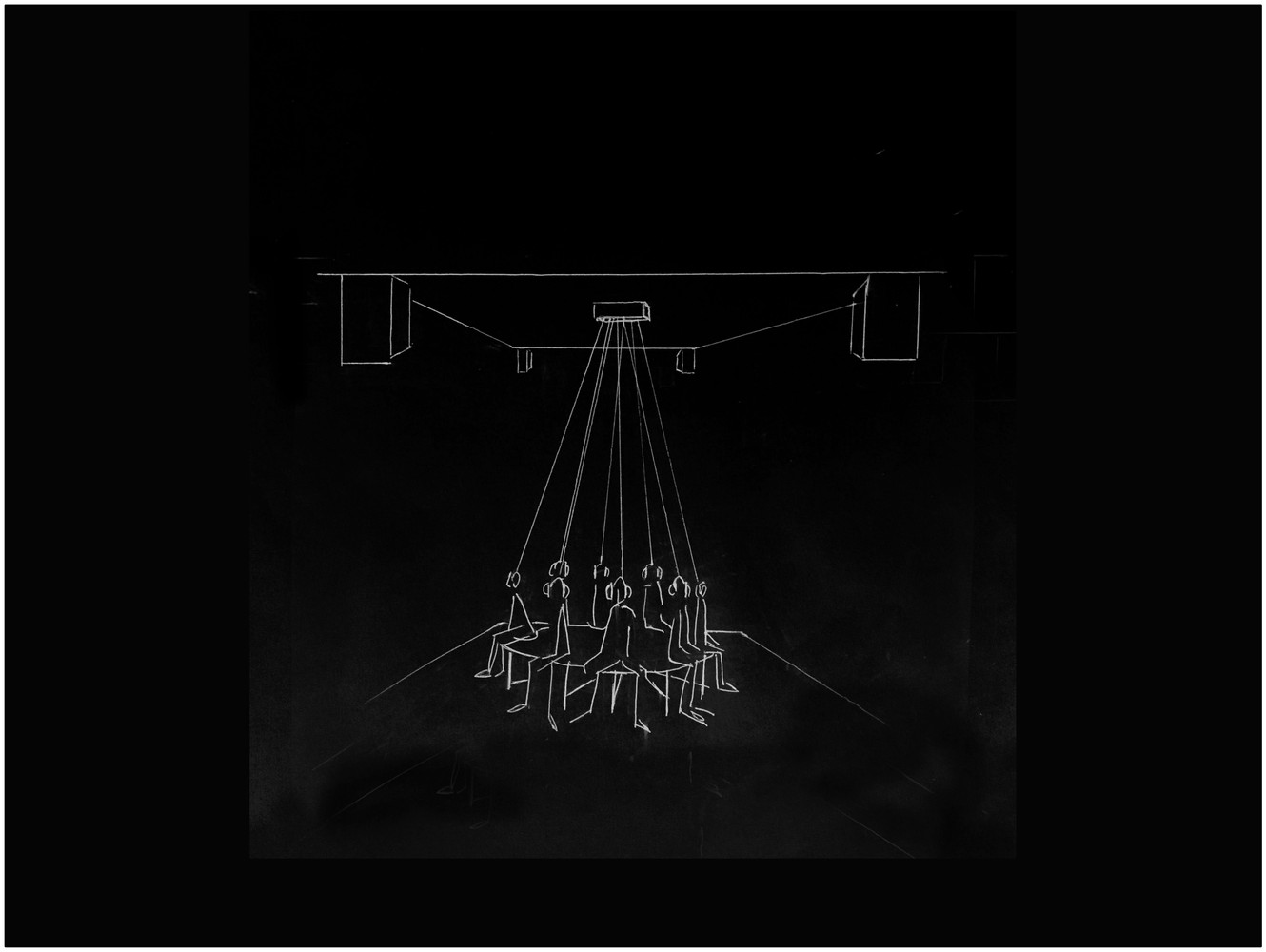Les improvisations musicales présentées dans C’est pour quoi jouent à souligner les convergences et les divergences entre les intentions de l’individu et leurs répercussions sur le collectif (et inversement). Diffusée par un dispositif spatialisé associant écoute intime et écoute collective, la musique résulte de l’interaction entre des agents informatiques dotés de « mémoires musicales » et les « stimuli » insufflés par des musiciens improvisateurs. C’est pour quoi présente une forme figée par l’enregistrement d’improvisations en duo entre « musicien humain saxophone » et « musicien humain machine » utilisant des technologies d’apprentissage automatique pour la création interactive temps-réel. S’affranchissant du didactisme de rigueur dans le champ de l’« IA créative » portant toute son attention sur les moyens, l’installation entretient la confusion des sources et des rôles. Elle présente la finalité « nue » de processus de création utilisant des instruments d’une nouvelle génération pour exploiter les pratiques créatives qu’ils offrent : meta- improviser et composer à l’échelle des intentions. Musiciens partenaires du projet : Rémi Fox, Steve Lehman.
Équipe Représentations musicales, Ircam ; Axel Roebel, Ircam ; Mathilde Ganancia ; Vir Andres Hera
Jérôme Nika est chercheur en interaction musicale humain-machine et musicien. Ses travaux portent sur la mobilisation d’une mémoire dans un contexte créatif et ont donné naissance à de nombreuses collaborations dans les musiques improvisées (Steve Lehman, Bernard Lubat, Benoît Delbecq, Rémi Fox) et la musique contemporaine (Pascal Dusapin). Les instruments logiciels qu’il développe avec l’Ircam – Institut de Recherche et de Coordination Acoustique/Musique ont été mis en œuvre dans plus de soixante productions : Onassis Center, Athènes, Ars Electronica, Annenberg Center – Philadelphia, Centre Pompidou, Collège de France, Centquatre, Montreux Jazz Festival, etc.
Musiciens partenaires du projet : Rémi Fox, Steve Lehman. Mixage : Geoffrey Durcak






